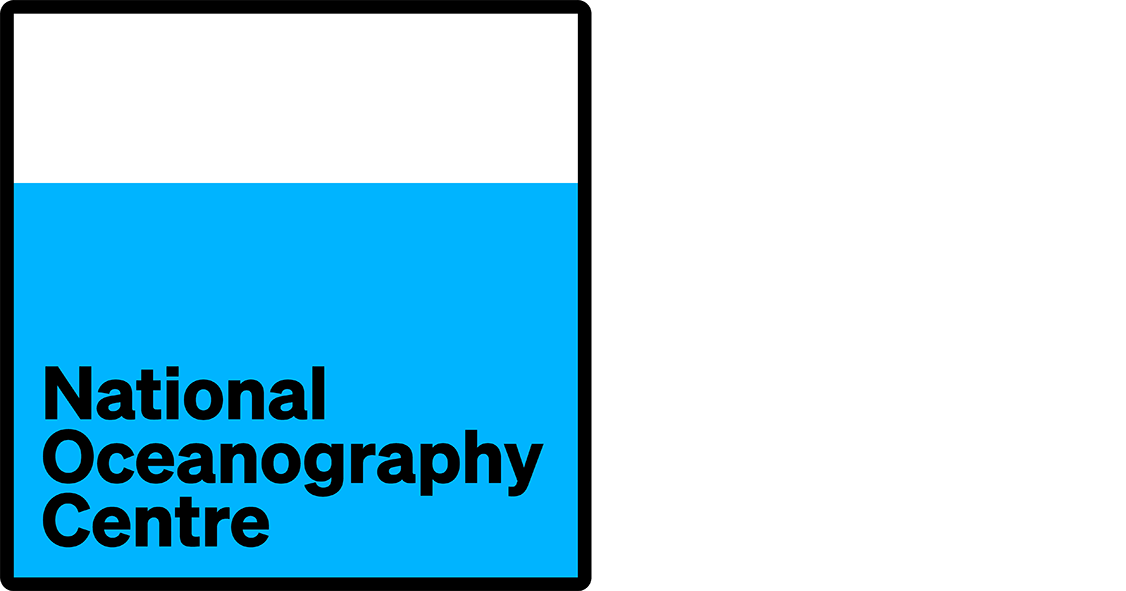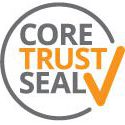RRS Discovery Cruise D321 (D321A) Discrete inorganic nutrient (nitrate, silicate and phosphate) concentrations from CTD OTE bottles
Content Of Data Series
| Parameter | Units | BODC Parameter code | No. of Samples | Comments |
|---|---|---|---|---|
| Inorganic nitrate | µmol l -1 | NTRZAATX | 1453 a | Nitrate = nitrate+nitrite |
| Inorganic silicate | µmol l -1 | SLCAAATX | 1453 a | |
| Inorganic phosphate | µmol l -1 | PHOSAATX | 1453 a |
a Please note: 1502 CTD samples were reported to have been taken in the cruise report (p201), however, a number of these were duplicate/triplicate analyses made from the same CTD OTE niskin bottle. Replicate analyses were subsequently averaged during BODC data processing (see BODC processing) resulting in a lower number of CTD samples.
Originator's Data Acquisition and Processing
Sampling Strategy
Inorganic nutrient samples were taken from 92 CTD casts throughout cruise D321A. Of these, 7 CTD casts were taken as part of the Extended Ellet Line, 27 as part of CTD survey 1, 32 were part of CTD survey 2, 19 of SeaSoar survey 1 and 9 were taken as part of SeaSoar survey 2 a . Samples were taken from the majority of depths from each cast.
a This totals 94 CTD casts, however site C1A3 (part of CTD survey 1) was also site IB12 (part of the Extended Ellet Line). Site C1A3/IB12 was visited twice during the cruise (stations 16204A and 16204B), therefore only 92 CTD casts were actually sampled for inorganic nutrients.
Materials and Methodology
Water for analysis was collected from depth using two different CTD systems. A 'standard' stainless steel unit (A) for physics and general sampling, and a titanium unit (B) for trace metal and productivity sampling. The stainless steel unit comprised of a SBE32 Seabird carousel (S/N 32-37898-0518) fitted with a 911+ Seabird CTD (S/N 0636) and twenty four, 20 litre OTE niskin bottles. The titanium unit comprised of a SBE32 Seabird carousel (S/N 32-34173-0493) fitted with a 911+ Seabird CTD (S/N 0637) and twenty four, 10 litre OTE trace metal niskin bottles. Nutrient concentration was determined using a Scalar Sanplus Autoanalyser following the methods described by Kirkwood (1996) (1) with the exception that the pump rates through the phosphate line are increased by a factor of 1.5. Further information on methodology and the performance of the autoanalyser can be found from p201 of the cruise report .
Data Processing
Data processing was undertaken using Skalar propriety software and was done within 72 hours of the run being finished. The limits of detection were defined as twice the level of background noise averaged out over the course of the cruise. The background noise levels in digital units (the arbitrary unit used by the skalar autoanalyser software) were measured at the start and at the end of 10 of the 37 runs performed during the cruise. These were then averaged to give an averaged background noise level for the whole cruise. This number was then multiplied by 2. The concentration per digital unit was taken from the calculations used to determine the blank nutrient level in the artificial seawater matrix. Multiplying this number by the concentration per unit gives the limit of detection as follows.
| Chemistry | Limit of Detection (µmol l -1 ) |
|---|---|
| Nitrate | 0.68 b |
| Silicate | 0.18 b |
| Phosphate | 0.04 |
b The limit of detection for nitrate and silicate can be taken as 0.1 µmol l -1 as visual inspection of the peaks clearly indicates that peaks down to this level are attributable to samples rather than fluctuations in the noise. This is because of the length of time over which the samples are analysed.
The errors for the nutrient analysis were worked out using a duplicate set of samples run during each analysis. A drift sample was included in each analysis to indicate if the baseline moves over the course of the run. These drift samples are included in pairs, i.e. 2 drift samples from the same batch are run one after the other. The first pair of these drifts was used as the duplicate samples in each of the 18 analyses. The error for the each analysis was determined using equation (1) where A is the largest of the duplicates and B is the smallest. These errors were then averaged over the cruise to obtain the error for the whole cruise.
Equation (1):
((A-B)/((A+B)/2))100
Table of errors:
| Chemistry | Error in data (%) |
|---|---|
| Nitrate | 1.55 |
| Silicate | 0.59 |
| Phosphate | 1.16 |
BODC Data Processing
Data Processing
Data arrived at BODC in a Microsoft Excel spreadsheet containing all the samples taken during the cruise. The spreadsheet was initially converted into a Comma Separated Values format file ( .csv ) and appropriate BODC parameter codes were subsequently assigned. The following table shows how the variables supplied were mapped to BODC parameter codes.
| Originator's Parameter | Originator's Units | Parameter description | BODC Parameter code | BODC Units | Comments |
|---|---|---|---|---|---|
| N | µmol l -1 | Inorganic nitrate via segmented flow autoanalyser and colourimetric detection | NTRZAATX | µmol l -1 | Nitrate=nitrate+nitrite |
| Si | µmol l -1 | Inorganic silicate via segmented flow autoanalyser and colourimetric detection | SLCAAATX | µmol l -1 | |
| P | µmol l -1 | Inorganic phosphate via segmented flow autoanalyser and colourimetric detection | PHOSAATX | µmol l -1 |
Data below the detction limit specified by the data originator were flagged '<'. Duplicate and triplicate analyses from the same CTD bottle were averaged. The averaged products were subsequently flagged 'M' if the error (%) between replicates was high and the precursor data values were clearly above the detection limits. Data points were dropped from the calculation where replicates contained a suspect data point or data below the detection limit. In cases where replicate values differed greatly, a suspect data point could be determined by comparison to measurements from other CTD niskin bottles fired at similar depths. The overall result was a .csv file containing only one phosphate, nitrate and silicate measurement per CTD OTE bottle sampled.
The data were loaded from the .csv file into an Oracle database where measurements were linked to corresponding depths through the CTD rosette bottle no. (supplied by the originator)and the CTD rosette bottle no. obtained from electronic Seabird CTD logs (which contained accurate pressure readings for each bottle fired). This was achieved via BODC unique bottle identifiers (IBTTLE) which were already associated with each CTD OTE bottle fired during the cruise. Depth (m) was calculated from the average pressure and latitidue using BODC function DEPSET.
Two rosette bottle numbers in the originator's file did not match entries in the CTD electronic logs. For cast 16202A, the originator collected from bottle 24 whereas only bottles 1-23 were fired according to the CTD logs. Checks were made against the written Seabird CTD logs which also reported that bottles 1-23 were fired. These sample values were similar in value to the other surface samples (7-12 m, bottles 23-18) suggesting it is from the surface. This was especially so for nitrate where bottle 24 = 1.76 µmol l -1 and bottles 23-18 were 1.34 - 1.77 µmol l -1 . This could suggest it was a replicate from one of the other surface bottles. Alternatively, bottle 24 could have been fired by accident. Similarly for cast 16203A, the originator collected from bottle 24 whereas only bottles 1-23 were fired acording to the electronic CTD logs. Likewise, only 23 bottles were reported in the Seabird hand-written CTD logs. However, these sample values (0.26, 0.06 and 0.01 µmol l -1 N, Si, P respectively) were much lower than other sample values measured for the cast (N = 1.64-18.34, Si = 0.19-11.82, P = 0.11-1.23 µmol l -1 ). This could suggest that a bottle was fired higher up in the water column. Alternatively, it could just be a bad replicate from one of the other surface bottles.
In order to resolve the issue, checks were made on preceding and subsequent casts. Bottle number 24 was fired on subsequent and preceding stainless steel casts suggesting there was not a problem with this bottle. No further information about bottle 24 could be found in the cruise report or technical notes. The pressure channel from the corresponding .cnv files were plotted. By viewing changes in pressure during cast 16203A, it could be seen that the CTD was held at ~7.5 db for 2 min then at ~0.7 db for around 5 min before the file ended. Similar observations were found for cast 16202A. This did not resolve the problem as a bottle could have been fired at 0.7 db (although this is likely the holding depth before lifting the CTD out of the water).
In a final attempt, the originator was contacted to see if he had any further information about these samples. He indicated that the label '24' was likely a mistake in both cases. For cast 16202A, the originator suggested that bottle 24 was a replicate analysis of the sample withdrawn from bottle 23. For cast 16203A, the originator suggested that bottle 24 was a blank analyses based on the low concentrations measured. Consequently, he suggested it was best to drop both of these samples from the dataset. Therefore, both measurements were dropped from the database.
Discrepancies between the originator's written depth (where supplied) and depth independently loaded in the database were checked. There was only one major discrepancy. For cast 16212B (rosette bottle 8) the depth supplied was 33 m whereas the rosette bottle depth was ~28 m. Despite this, the data looked plausible for a measurement from 28 m and not 33 m. This was determined by comparison to bottle 16 also fired at ~28 m and measurements from ~28 m made on the 'A' cast taken at the same station.
The data were then visually checked in Microsoft Excel by plotting the depth profile of each cast. Flags were added as appropriate. Absent data were updated to the absent data value '-1' and flagged. According to the originator, absent data were samples that were lost during analysis. The samples would have been taken but there may have been an error during analysis that affected these samples, e.g. a bubble getting in the system and stick in the flowcell and so giving erroneous results.
Data Quality Report
None
Problem Report
None
References
(1) Kirkwood, D (1996) Nutrients: Practical notes on their determination in sea water. ICES techniques in marine environmental sciences. No. 17, 25pp.


